With its foot stuck in a milkweed flower like a Chinese finger trap, the European Skipper was struggling to free itself. On another flower nearby only a leg remained from a previous struggle. Survey enough milkweed flowers and eventually you’ll find a few dead insects, usually small species, left dangling from a leg or two.
They are not a carnivorous plant; trapping and death are just an accident. Instead, milkweed has solved the problem of pollination in a unique manner. There are five pinkish hoods with horns where the nectar is located. Milkweed produces copious amounts of sweet smelling nectar in the hoods to attract insect pollinators. Between each of the hoods is a dark spot with a long slit leading down from it. With most of the flowers in the umbel hanging downward, these slits are a natural place for insects to grab with their feet while syphoning nectar upside-down.
Unlike most flowers, milkweeds don’t produce tiny grains of pollen to be carried away piece by piece. Instead, the flower produces sticky, orange packets of pollen, called pollinia, which are designed to stick to an insect’s leg. In each of the five slits are two pollinia waiting to be accidentally snagged and carried off.
In order for an insect to pick up one of the pollinia from a milkweed flower, its leg has to slip into a tiny slit between the anthers along the side of the flower. As the insect struggles to pull its leg back out of that tiny opening, it might emerge with a pollinia or two stuck to it. If the insect is too small or too weak, the only way it can escape the flowers grip is to leave its leg behind. Worker bumblebees, much smaller than spring queens, that forage on milkweed often are missing a claw or leg part.
If the flower is lucky, the insect will travel to another milkweed flower in search of nectar and deliver the pollinia. To do this successfully, they must again pass their leg through one of the anther slits in another flower and have the pollinia come into contact with a very small area at the base of the stigma lobe. There’s a cost to the insect for this delivery service. Bumblebees with pollinia attached forage about 25 percent more slowly.
The odds for successful pollination are slim. Seed set in milkweeds is often quite low with only a flower or two in the entire umbel producing seed. But a few flowers are enough to produce clouds of drifting seeds each autumn to sow a new generation in some far off field.
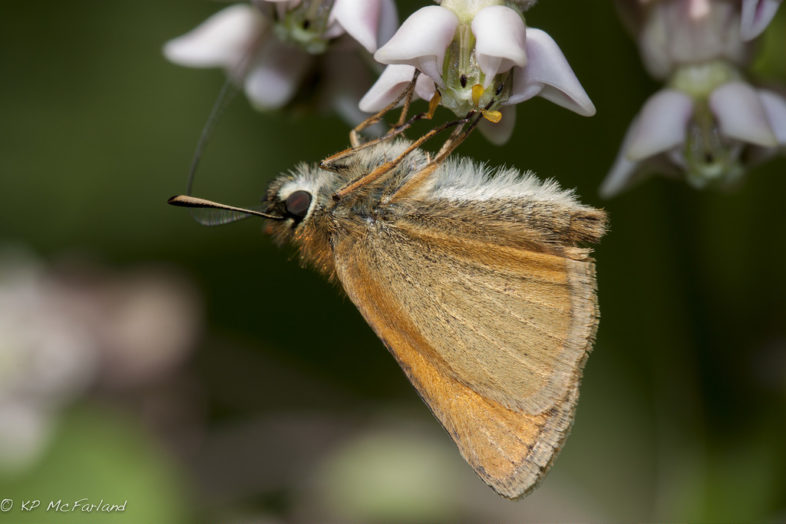
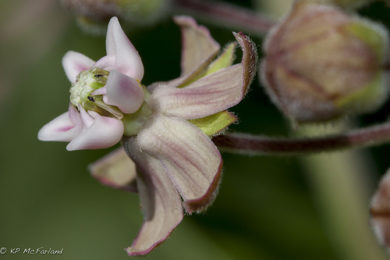
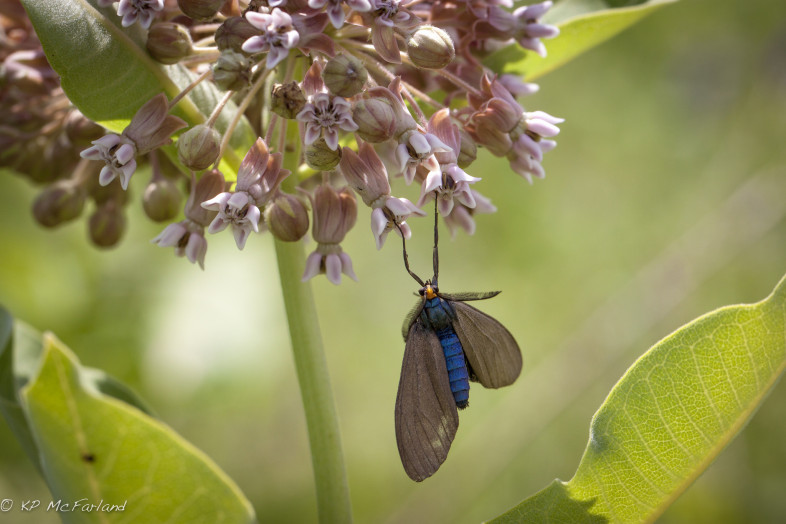
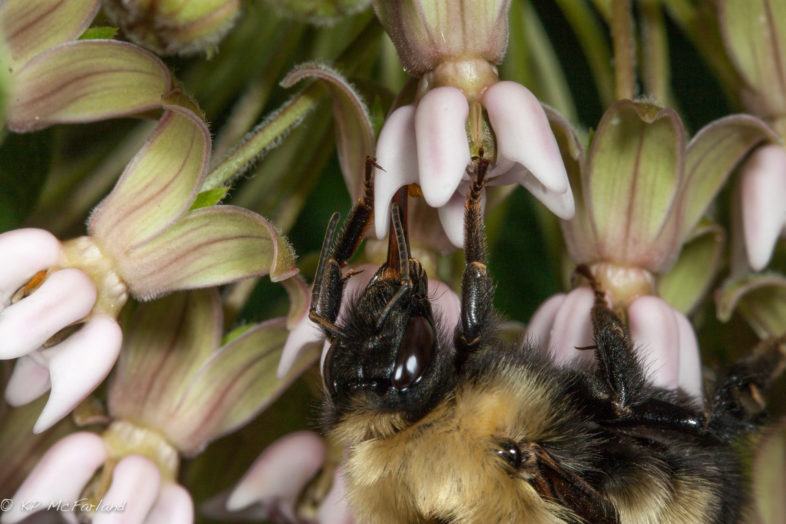
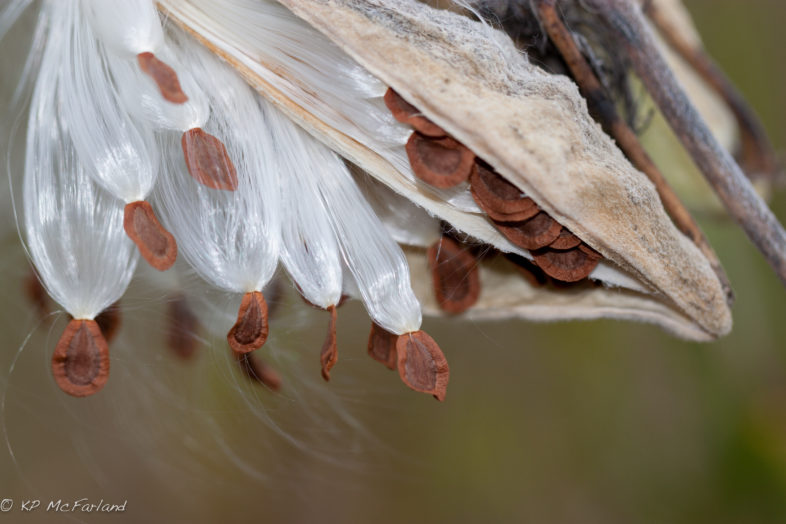

This is GREAT stuff, Kent. I just had to run out and get a flower to examine… at which point I watched a monarch visiting my milkweeds and nectaring on the flowers. YEP! At least one egg newly deposited. Thanks for the lesson. Yay, monarchs.
Is there any successful insect who escapes with all lives and limbs? I always assumed honey bees were safely benefitted by milkweed blossoms, not having noticed any hanging dead ones. The Butterfly weed’s smaller flowers seem safe.
Many years ago I spent a summer pollinating milkweed as part of a project in graduate school and wanted to clarify a few details. The slits are actually stigmatic slits. The small black dot atop each slit is a grooved structure called a corpusculum. (if it’s missing- some insect has already flown away with the goods). The corpusculum is attached by two arms to the pollinia- which are located in two pockets above and on either side of the stigmatic slit. When a pollinator catches its leg on the grooved corpusculum the two pollinia are pulled out of the pockets. They eventually rotate 90 degrees so they are in the correct position to slide into the a stigmatic slit on another flower/plant. Here’s a link to a video of someone removing pollinia: https://www.youtube.com/watch?v=h5zQo7wTSyM
Thank you! My insect graveyard is now explained.
Great science storytelling, Kent!
Thanks Dan! Hope all is well and you are near a patch of milkweed enjoying the show!